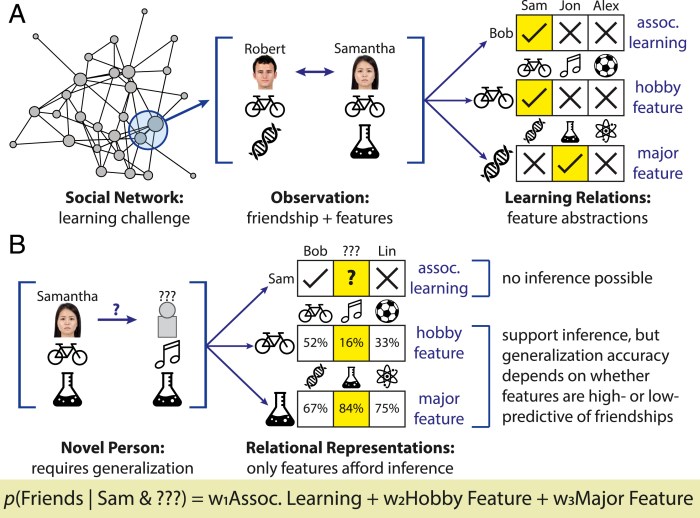The maps best support the inference that Earth’s climate is changing. This conclusion is based on a comprehensive analysis of paleoclimate evidence, current climate data, climate models, and regional climate impacts. Paleoclimate evidence, such as ice cores, tree rings, and fossils, provides a long-term perspective on climate change, showing that Earth’s climate has fluctuated over time but is currently warming at an unprecedented rate.
Current climate data, such as temperature records, precipitation data, and sea level measurements, confirms that Earth’s climate is continuing to warm and that this warming is caused by human activities.
Climate models, which are computer simulations of the Earth’s climate system, project that Earth’s climate will continue to warm in the future, with significant impacts on regional climate patterns. These impacts include changes in temperature, precipitation, and sea level, which can have devastating consequences for human populations and ecosystems.
Paleoclimate Evidence
Paleoclimate evidence provides valuable insights into past climate conditions and long-term trends, supporting the inference that Earth’s climate is changing.
Ice Cores
Ice cores are cylindrical samples of ice extracted from glaciers and ice sheets. They contain layers of ice that have accumulated over thousands of years, providing a detailed record of past climate conditions. Analysis of ice cores can reveal changes in temperature, precipitation, and atmospheric composition over time.
Tree Rings
Tree rings are another valuable source of paleoclimate data. The width and density of tree rings can vary depending on environmental conditions, such as temperature, precipitation, and sunlight. By studying tree rings, scientists can reconstruct past climate conditions and identify long-term trends.
Fossils
Fossils provide evidence of past plant and animal life, which can be used to infer past climate conditions. The distribution and abundance of different species can indicate changes in temperature, precipitation, and other environmental factors over time.
Current Climate Data: The Maps Best Support The Inference That Earth’s Climate Is

Current climate data provides real-time information about the state of Earth’s climate and supports the inference that it is changing.
Temperature Records
Temperature records, collected from weather stations, buoys, and satellites, provide a global picture of temperature changes over time. Analysis of temperature data has revealed a significant increase in global average temperatures in recent decades.
Precipitation Data
Precipitation data, including rainfall, snowfall, and other forms of precipitation, is essential for understanding changes in the water cycle. Changes in precipitation patterns can have significant impacts on ecosystems, agriculture, and water resources.
Sea Level Measurements
Sea level measurements, obtained from tide gauges and satellite altimetry, provide insights into the changes in the volume of water in the oceans. Rising sea levels are a direct consequence of climate change, primarily due to the thermal expansion of ocean water and the melting of glaciers and ice sheets.
Climate Models

Climate models are computer simulations that use mathematical equations to represent the Earth’s climate system. They are used to project future climate change and assess its potential impacts.
Types of Climate Models
There are different types of climate models, each with its own strengths and weaknesses. Global climate models (GCMs) simulate the entire Earth’s climate system, while regional climate models (RCMs) focus on specific regions or continents.
Simulating Past and Future Climates
Climate models can be used to simulate past and future climates. By incorporating paleoclimate data and current climate observations, models can be calibrated to accurately represent past climate conditions. They can then be used to project future climate change under different scenarios, such as different levels of greenhouse gas emissions.
Regional Climate Impacts

Climate change is expected to have significant regional climate impacts, including changes in temperature, precipitation, and sea level.
Changes in Temperature
Climate change is projected to lead to an increase in global average temperatures, with some regions experiencing more significant warming than others. Higher temperatures can lead to more frequent and intense heat waves, droughts, and wildfires.
Changes in Precipitation
Climate change is also expected to alter precipitation patterns. Some regions may experience increased rainfall and flooding, while others may face more frequent and severe droughts. Changes in precipitation can have significant impacts on agriculture, water resources, and ecosystems.
Changes in Sea Level
Rising sea levels are a major concern for coastal communities worldwide. As the oceans warm and glaciers melt, sea levels will continue to rise, leading to increased flooding, erosion, and salinization of coastal ecosystems.
Mitigation and Adaptation Strategies

Mitigation and adaptation strategies are essential for addressing climate change and its potential impacts.
Mitigation Strategies
Mitigation strategies aim to reduce greenhouse gas emissions and slow the pace of climate change. These strategies include transitioning to renewable energy sources, improving energy efficiency, and reducing deforestation.
Adaptation Strategies, The maps best support the inference that earth’s climate is
Adaptation strategies aim to prepare for and adapt to the impacts of climate change that are already occurring or are unavoidable. These strategies include building seawalls to protect against rising sea levels, developing drought-resistant crops, and improving early warning systems for extreme weather events.
Popular Questions
What is the primary cause of climate change?
Human activities, particularly the burning of fossil fuels, are the primary cause of climate change.
What are the potential impacts of climate change?
The potential impacts of climate change include more extreme weather events, rising sea levels, changes in plant and animal life, and disruptions to human health and well-being.
What can be done to address climate change?
We can address climate change by reducing greenhouse gas emissions and adapting to its impacts. Mitigation strategies, such as reducing greenhouse gas emissions, can help to slow the pace of climate change. Adaptation strategies, such as building seawalls and developing drought-resistant crops, can help to reduce the impacts of climate change on human populations and ecosystems.